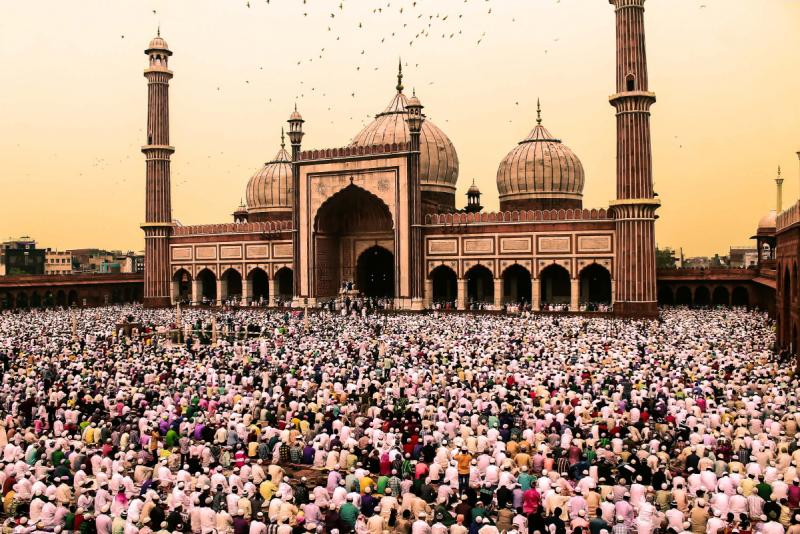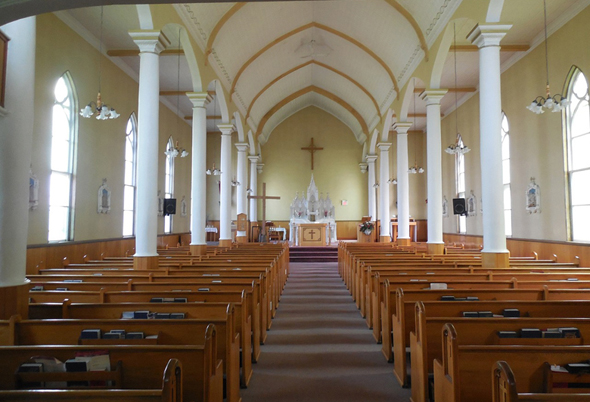Q&A: World Religions Adapt to COVID-19 Through Virtual Practice

As social distancing efforts continue in order to help curb the rates of COVID-19 infection, religious communities around the world have struggled to adapt their practices and gatherings to the new guidelines. Dheepa Sundaram, assistant professor in DU's Department of Religious Studies, answered some questions for the CAHSS Newsroom regarding religion in virtual spaces and how the pandemic has impacted religious practices and communities.
Can you talk about your current research as part of the Department of Religious Studies?
My research focuses on South Asian digital culture, ritual and performance. I examine the ways in which online/digital platforms (e.g. social media, apps, websites, artificial intelligence installations, and other digital tools/mechanisms) impact religious praxis, access/accessibility to the sacred for marginalized communities, the presentation/delivery/fashioning of sacred space, and economic and commercial interests. I am particularly interested how the marketing of religion and religious practices online reinforces particular identitarian and ethnonationalist movements within India. My current project explores how cultural marketing in virtual ritual and worship platforms produces a middle class, branded Hinduism that dovetails with the Hindu nationalist political project by flattening Hindu beliefs and traditions to become easily salable.
How were digital religious practices performed before the pandemic?
While I can’t speak for all religions, religious practices online have been around for over 20 years. Brenda Brasher’s seminal book “Give Me that Online Religion” (2004), Chris Helland’s article “Surfing for Salvation” (2001), and Heidi Campbell’s extensive work, including her recent edited volume “Digital Religion” (2013), tell us that the internet has been fertile ground for innovation and expansion of how people access and interact with the sacred, well before the pandemic.
However, in most religions, the material sacred spaces (e.g. temples, churches, synagogues, mosques, etc.) are still privileged as more “authentic” and in some cases, more efficacious for rituals, prayer, etc. In recent years, we have seen more of a combination of the virtual and material in many religious traditions (e.g. recording of high holiday celebrations or streaming through platforms such as Facebook Live to provide access to a broader audience).
Can you explain how digital religious practices have evolved since the pandemic?
Now, we see more of an effort to make virtual platforms resemble or articulate elements of material sacred spaces and more people taking part in virtual religious practice. I think one of the more interesting pieces I have read concerns how AI is being used in Japan to conduct Buddhist funeral practices. While this piece isn’t particularly focused on COVID-19, it hints at how things will change now that we are forced into this virtual mode of engagement. There have been several articles since 2017 that have explored how Buddhism in China and Japan has used robots for everything from introducing religious concepts to conducting Buddhist funeral rites. In pandemic times, innovations that were once a novelty have become a necessity. The pandemic, in some ways, has made digital methods of religious engagement — such as funeral rituals — more acceptable for everyone.
In India, we have seen the emergence of the figure of “Coronasur.” The term “asur/asura” is used to describe a divine being that causes harm or negative consequences. In response to COVID, we have seen both “Coronasur” and “Corona Devi” or the Corona goddess emerge to help make sense of what’s happening. Corona Devi is pictured holding a stethoscope and sanitizer and wearing a mask. In many ways, this is an adaptation of the traditional role of the goddess in Hindu traditions of being a force of “good” that defeats “evil.” The Coronasur figure has been pictured as a traditional divine figure of disruption that must be defeated to protect the people.
How are religious communities that previously had not used virtual methods responding to the shift of religious rituals and traditions to a digital form?
I think many religious communities and traditions have adapted well to virtual worship modalities. We do see in India (which is my main area of expertise), the continuing need for the material space. Many temples have continued to perform rituals for deities housed in temples without adherents. In some cases, as we have seen with the Tirumala temple in Karnataka, temples have remained open to adherents well into the summer before shutting down due to priests becoming ill with COVID-19. The Indian government has been reluctant to shut things down because of the importance of performing rituals in the consecrated space of temples in order to ensure the “power” of the rituals is realized.
However, I would note the idea of virtual rituals in Hinduism is not new. Indeed, online religious engagement was widespread outside of India before the pandemic. Also, many folks have continued the tradition of performing rituals and personal worship at home shrines (as they did before the pandemic) but avoided temples that have been closed here in the U.S. as well as in other places outside of India with large Indian populations, such as the U.K. I think churches and church communities seem more affected, as most churches held in-person communal worship before the pandemic and have now been forced into virtual worship situations.
In my view, due to the importance of shared fellowship within Christianity, churches have faced some resistance to transitioning to online worship modalities (as we have seen with the large number of court challenges churches have filed to continue holding in-person services). Similarly, mosques, which also place a great deal of value on shared communal prayer, have also had a difficult time adjusting to virtual worship, particularly in India. However, by and large it seems most religious institutions and traditions have been able to adjust by forming virtual communities for adherents and finding ways to continue their rituals and traditions of shared prayer and fellowship.
What challenges have there been for religious leaders in this transition from in-person worship to virtual gatherings?
The pandemic has both increased our use of online platforms (e.g. social media, apps, live streaming, etc.) while also making us feel more isolated. In India as well as here in the U.S., priests have continued to perform rituals in temples and indeed, have insisted on doing so to help fight the virus. Many have argued that the recent phenomenon of Corona Devi that I mentioned earlier can only be “activated” through these rituals. For many traditional Hindu priests, online communities can only provide comfort but cannot actually channel divine power, a belief that precedes the pandemic and has only become strengthened during this time. I think for these priests, there is little value in holding virtual satsangs or prayers, as their efficacy is greatly diminished. Since many Hindu adherents also hold this view, the purpose of online gatherings is different from those which occur in material sacred spaces such as a temple.
In this sense, virtual platforms offer comfort, but not divine presence for Hindu communities. I think beyond this, many Hindu priests as well as other religious figures initially lacked the necessary technical knowledge and skills to carry out successful virtual gatherings. Although as the pandemic has continued, many have become proficient in Zoom, Facebook Live, etc. For these reasons, puja (personal worship practices in Hinduism) apps have become even more popular though which adherents can continue to worship without the direct aid of a priest. However, the main concern about the spiritual value of such practices remains.
How do you see digital religious practice fitting in, in a post-pandemic world?
I think virtual everything is here to stay and religion is no exception. I think we will continue to see the digital become a more integral part of our lives, as it was even before the pandemic. I don’t think the material sacred space will disappear or even become less important for most religious traditions. Rather, I think we will see more innovation in how adherents access the sacred. I think one of the most interesting questions for me as a researcher of digital religion will be how religious communities will navigate questions of access/accessibility, authenticity and authority. In other words, what will this increased online presence do to increase access to these spaces? Is there a concern that internet spaces operate according to capital flows rather than cultural value? What happens when we translate culture or religious belief into capital? Will the internet truly expand and exemplify the diverse range of practices, beliefs and traditions that have traditionally encompassed religious praxis within material spaces?
In the end, I believe religious community in online spaces will become separate from religious practice, as it already has. In my view, social media platforms in particular will retain their primary function of creating like-minded communities engaged in religious fellowship and shared experience rather than spaces of worship. I do think the dialectic between these social media spaces and the material practice of religion will be interesting to watch as enter a post-pandemic world.






